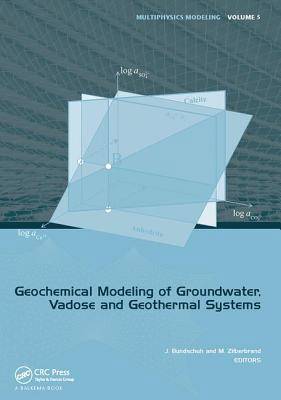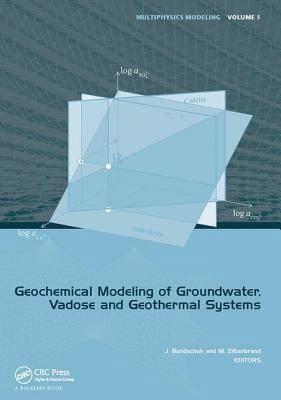
- Retrait gratuit dans votre magasin Club
- 7.000.000 titres dans notre catalogue
- Payer en toute sécurité
- Toujours un magasin près de chez vous
- Retrait gratuit dans votre magasin Club
- 7.000.0000 titres dans notre catalogue
- Payer en toute sécurité
- Toujours un magasin près de chez vous
Geochemical Modeling of Groundwater, Vadose and Geothermal Systems
Description
Geochemical modeling is an important tool in environmental studies, and in the areas of subsurface and surface hydrology, pedology, water resources management, mining geology, geothermal resources, hydrocarbon geology, and related areas dealing with the exploration and extraction of natural resources.
The book fills a gap in the literature through its discussion of geochemical modeling, which simulates the chemical and physical processes affecting the distribution of chemical species in liquid, gas, and solid phases. Geochemical modeling applies to a diversity of subsurface environments, from the vadose zone close to the Earth's surface, down to deep-seated geothermal reservoirs.
This book provides the fundamental thermodynamic concepts of liquid-gas-solid phase systems. It introduces the principal types of geochemical models, such as speciation, reaction-path or forward, inverse- and reactive-transport models, together with examples of the most common codes and the best-practices for constructing geochemical models. The physical laws describing homogeneous and heterogeneous chemical reactions, their kinetics, and the transport of reactive solutes are presented. The partial differential or algebraic equations representing these laws, and the principal numerical methods that allow approximate solutions of these equations that can provide useful solutions to model different geochemical processes, are discussed in detail. Case studies applying geochemical models in different scientific areas and environmental settings, conclude the book.
The book is addressed to students, teachers, other professionals, and to the institutions involved in water, geothermal and hydrocarbon resources, mining, and environmental management. The book should prove useful to undergraduate and graduate students, postgraduates, professional geologists and geophysicists, engineers, environmental scientists, soil scientists, hydrochemists, and others interested in water and geochemistry.
Spécifications
Parties prenantes
- Editeur:
Contenu
- Nombre de pages :
- 334
- Langue:
- Anglais
- Collection :
Caractéristiques
- EAN:
- 9781138074446
- Date de parution :
- 28-06-17
- Format:
- Livre broché
- Format numérique:
- Trade paperback (VS)
- Dimensions :
- 175 mm x 246 mm
- Poids :
- 635 g

Les avis
Nous publions uniquement les avis qui respectent les conditions requises. Consultez nos conditions pour les avis.





